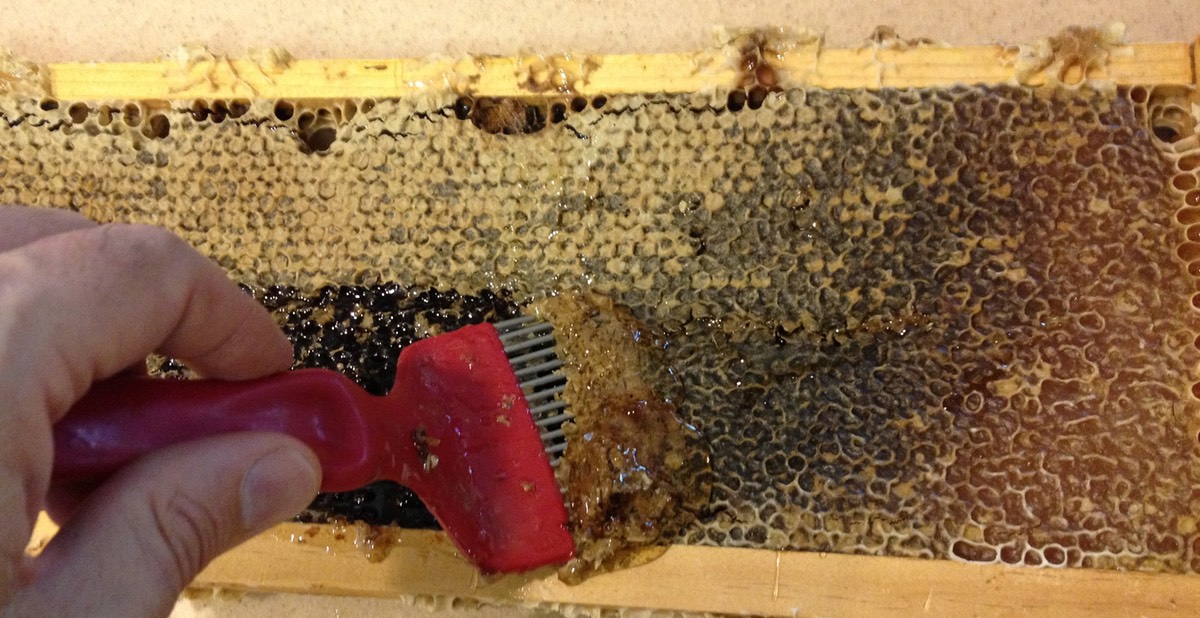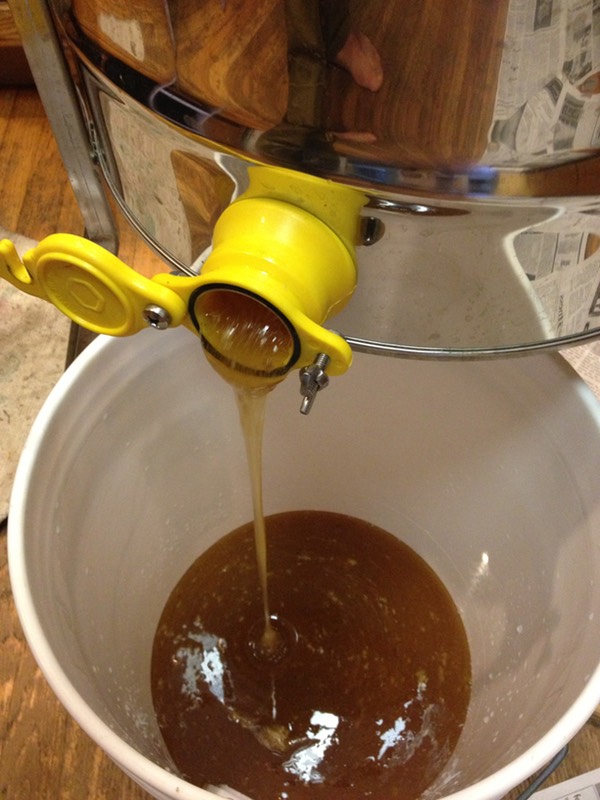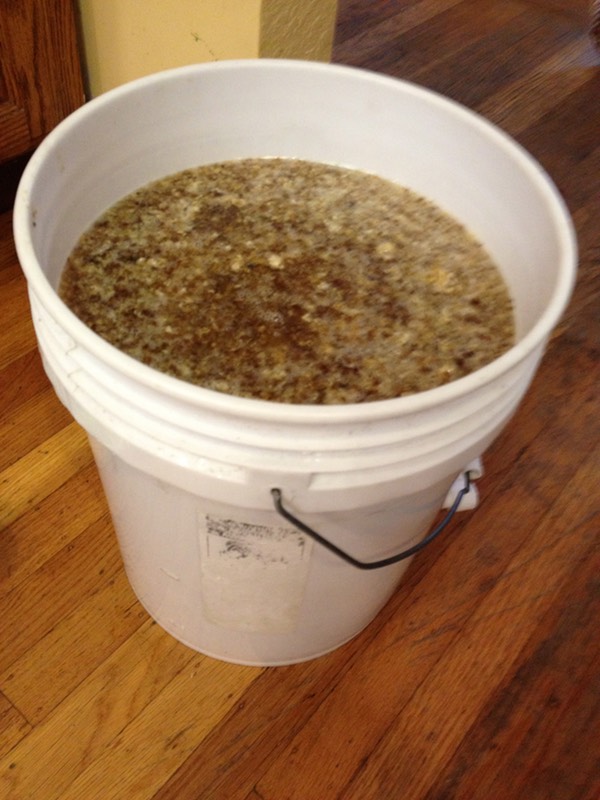Healthful Honey Harvest
I've mentioned here before that I have some beehives. (Here's a nice article about hobby beekeeping in case you are interested.) My two hives that I had last year didn't make it through the winter, so I had to start anew this year. I caught three swarms this spring; the first one I caught has been doing just amazingly well. After just three months, I was already able to harvest some of their honey reserves.
Just before leaving for vacation last month I noticed that they had two full "supers" (boxes containing 10 frames) were full of honey. So I gave them some more layers in their hive, so they had a place to put even more honey, then took off to Europe.
Now that I'm back, I finally had a chance this weekend to go harvest those extra frames. Four of the frames weren't quite ready yet (the honey cells should be capped up with wax when the honey is ready to go), so I left them in the hive. That left me sixteen frames — about 3 times the small harvest I had last year.
Yesterday, I put Fleetwood Mac on "shuffle" on the iPod and got busy in the kitchen to get this honey out of those frames.
Just for fun, and since it's easier to use the iPhone camera in the kitchen than it is when I'm out in my badass beekeeping suit with the bees, I thought I'd take some pictures to show how the honey is extracted from the frames that come from the hive.
Here's a "super" with most of the frames still in it. I'd already shooed the bees away, so I've brought this into my kitchen where fortunately I have a very large, easy-to-clean counter.
You can see, toward the top of the photo, the exposed side of one of the frames. Each one of these frames holds about 3 pounds of honey. But it's trapped in there; each cell is capped with beeswax.
Using a special tool, I scrape the top layer of beeswax off. (This is the messiest part of the operation.) The scrapings (a mix of beeswax and honey) get saved for later.

The honey that gets made depends on a number of factors such as what flowers were used and storage time. If you look carefully you'll see that the honey on the right edge (added later, I reckon) is a lighter color than the darker honey in the rest of the photo.
I dropped three frames, uncapped-side-out, into a hand-crank extractor (borrowed from another beekeeper) that uses centripetal force to throw the honey out to the sides, where it drips down the stainless steel walls to the bottom.
After a vigorous spin, I repeated the process with the other sides of the frames. After spinning out another set of three frames, the bottom was getting full, so it was time to pour the honey out into a five-gallon bucket.

By the time I got through the sixteen frames, that bucket was pretty full! If I had had any more to spin, I would have had to start a new bucket's worth!
The weird coloring is just little bits of beeswax that also got spun off of the frames.(I call it "oatmeal" because that's what it looks like to me.) It rises to the top, and can be filtered out or just scraped off the top after it has a chance to settle.

The total amount of honey in that bucket, from those 16 frames? A bit over fifty pounds. Wow.
The next step is to jar it up. The bucket has a spigot on the bottom, just like the extractor, so it's easy to fill up jars. I slap on my homemade label (Handmade "Sweet Home Alameda" label designed to resemble the Lynyrd Skynyrd logo) and the jars are good to go!
(Go where? Well, so far my harvests have been small enough that it's just barely enough for the family and sharing with friends. This time, I may share with even more friends! I'm not quite ready to give up the software business yet….)
